What is sustainable shopping? Here are 5 key facts ethically minded consumers need to know.
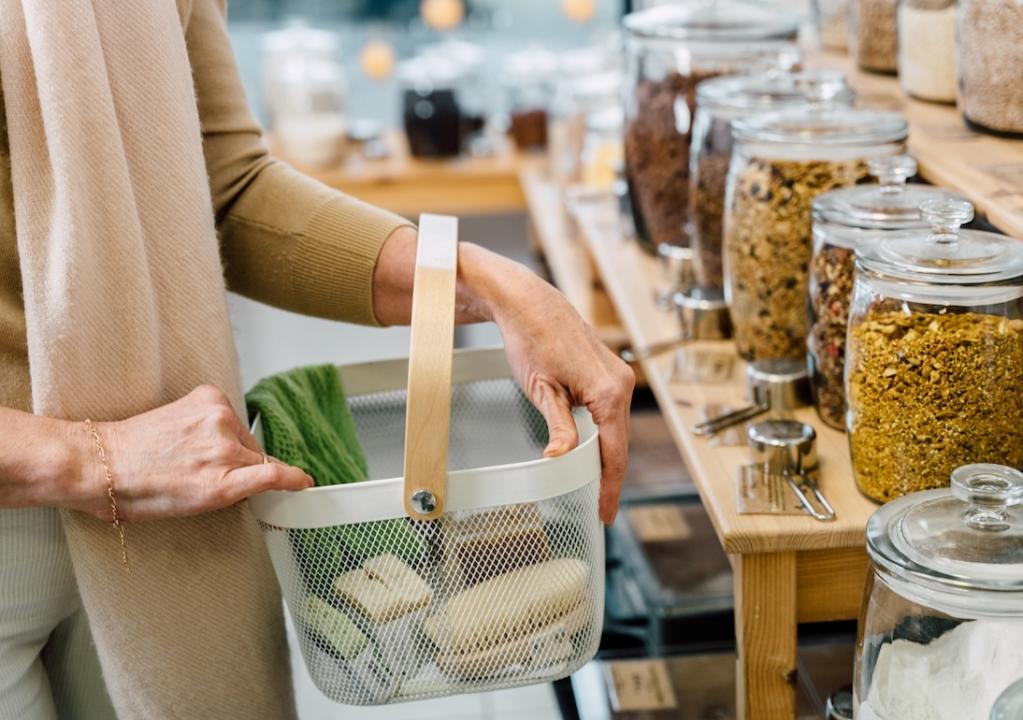
Iryna Inshyna // Shutterstock
What is sustainable shopping? Here are 5 key facts ethically minded consumers need to know.
A woman shops at a zero-waste store.
Navigating eco-friendly products isn’t easy for the ethically minded consumer. Despite the best intentions, sustainable shopping often requires extra time, discretion, and research—and with the holidays around the corner, the pressure to buy is intense.
Shopping sustainability involves considering a product’s entire life cycle. That includes where and how its materials are sourced, the item’s long-term usefulness, and its ability to be reused or recycled. In a media-saturated world, sustainable shoppers must not only be mindful about their needs and resources but also resist the urge to impulse buy.
What’s more, as sustainability becomes increasingly trendy, consumers may find it difficult to distinguish between authentically eco-friendly products and those that merely have the veneer of sustainability. Such “greenwashing” occurs when companies misrepresent products as better for the Earth than they are. Misleading marketing or branding about a product’s sustainability not only dupes consumers—it also undermines real efforts to be more conscious about consumption amid the growing climate crisis.
Global consumption of materials has increased exponentially over the past century, with the U.S. leading the charge, according to a 2018 report from Quantis. This increase, in part, is due to the rise of fast fashion, which is “simply incompatible with sustainability,” according to Rachel Greenly, an online superstore’s seasonal warehouse worker, in her guest essay for The New York Times. MIT researchers estimate that global greenhouse gas emissions from the textile industry contribute to up to 10% of total GHG emissions every year. And, if things continue the way they have been, the researchers expect textile industry emissions to rise 30% come 2030.
National attempts toward sustainability began in 1969 when the National Environmental Policy Act attempted to foster conditions where “humans and nature can exist in productive harmony” and “that permit fulfilling the social, economic and other requirements of present and future generations.” Despite good intentions, creating, manufacturing, and buying sustainable goods remains a challenge five decades later.
Sustainable shopping requires a shift in both habits and mindset. In fact, it might not require shopping at all—perhaps you can reupholster a chair or repair a wool sweater so that it feels new again. It might mean making fewer purchases of higher-quality items from renewable materials. These might have a higher initial cost but will save you money down the road in terms of durability or price per use.
Made Trade answered five important questions about sustainable manufacturing and shopping to help ethically minded consumers who want to make the best choice for themselves, and the planet.
![]()
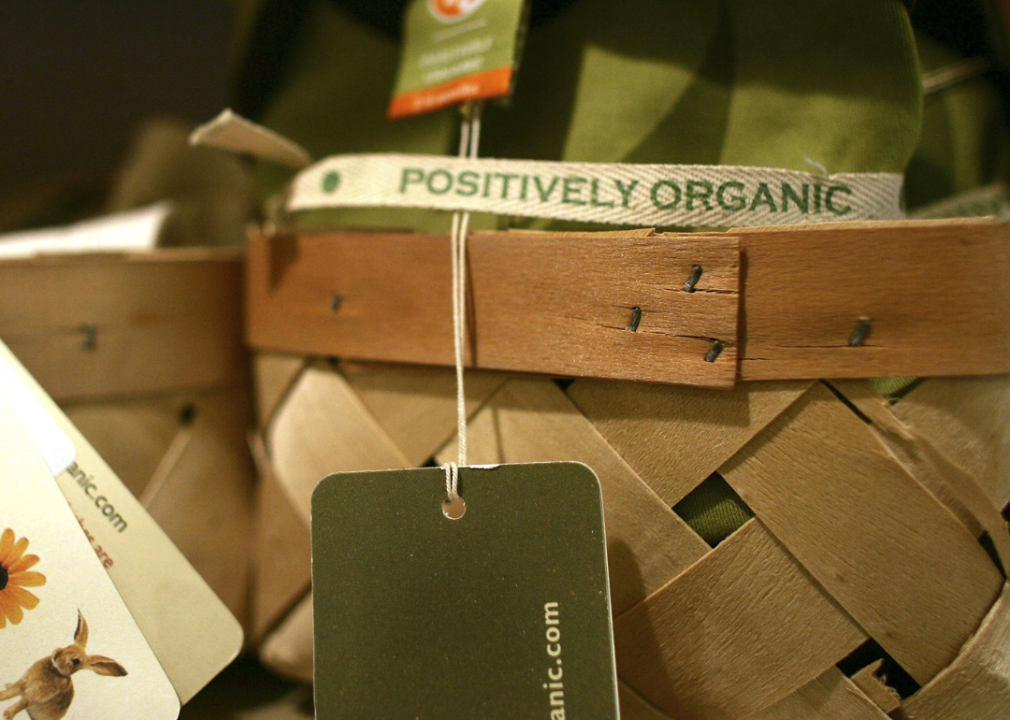
Spencer Platt // Getty Images
What are some of the most sustainable materials?
A basket filled with fabric with a label that says positively organic.
Synthetic materials, like petroleum-based plastics, are hazardous to extract and toxic to produce. They also don’t biodegrade, adding environmental waste that can build to harmful levels. While natural materials are often a better choice, their sustainability varies. The mining required for extracting metals, for example, can cause health issues and environmental harm. It also requires high amounts of energy.
Renewable materials like bamboo, wood, hemp, wool, cotton, linen, clay, and coconut are some of the most sustainable materials and can be used in a variety of ways, including clothing, construction, furniture, and heating. Interestingly, clay is such a good insulator that ceramic tile is used to prevent the U.S. space shuttle from overheating!
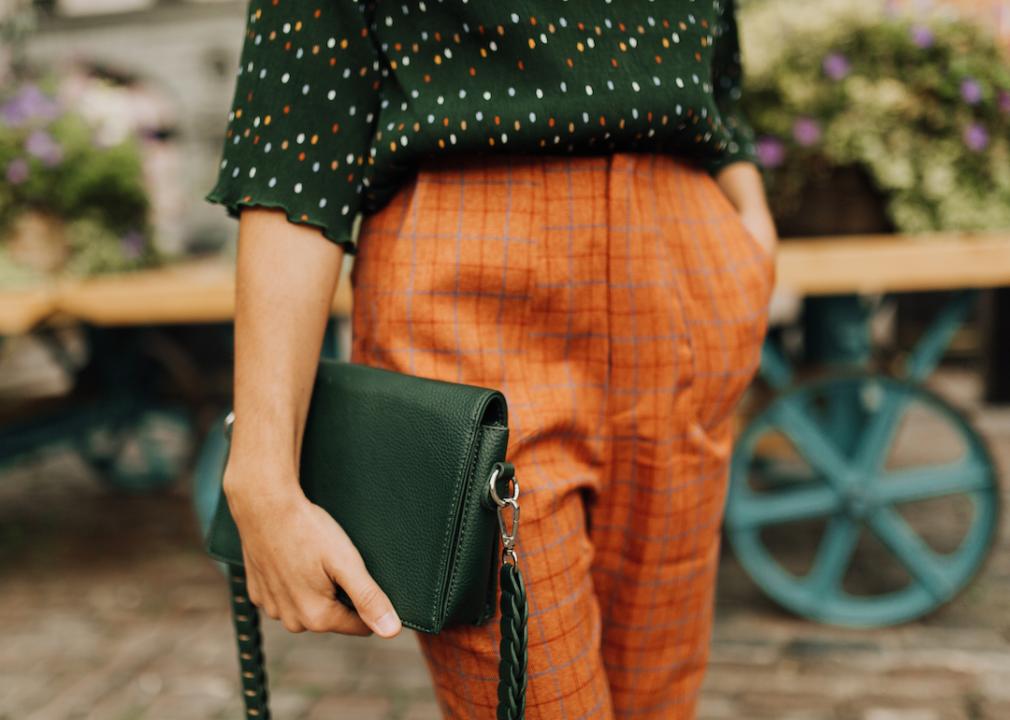
Olgakimphoto // Shutterstock
What is vegan leather and is it better for the planet than the real thing?
A person wearing slacks and patterned blouse holds a black purse.
Leather is made from animal skin—usually from cows, pigs or buffalo as a byproduct of the meat industry, but also other animals like sheep, snakes, alligators, and even horses. Vegan leather may seem like an oxymoron, but the term describes any faux leather not made from an animal product. Many different materials are used to make vegan leather, including natural fibers from materials like pineapple leaves, cork, and apple peels, as well as synthetics derived from petroleum-based plastics.
Vegan leather derived from fossil fuels is not sustainable—the process releases toxic chemicals, and, like all plastics, the final product doesn’t biodegrade. Vegan leathers made from natural fibers are more sustainable, but while plant-based options have a smaller carbon footprint than industrial cattle raising, vegan leathers don’t have the same lifespan as real leather, which, when taken care of properly, can last for generations. If you choose real leather, make sure to check where the leather is sourced from and if the tanning process is environmentally friendly, or consider opting for vintage or second-hand items.
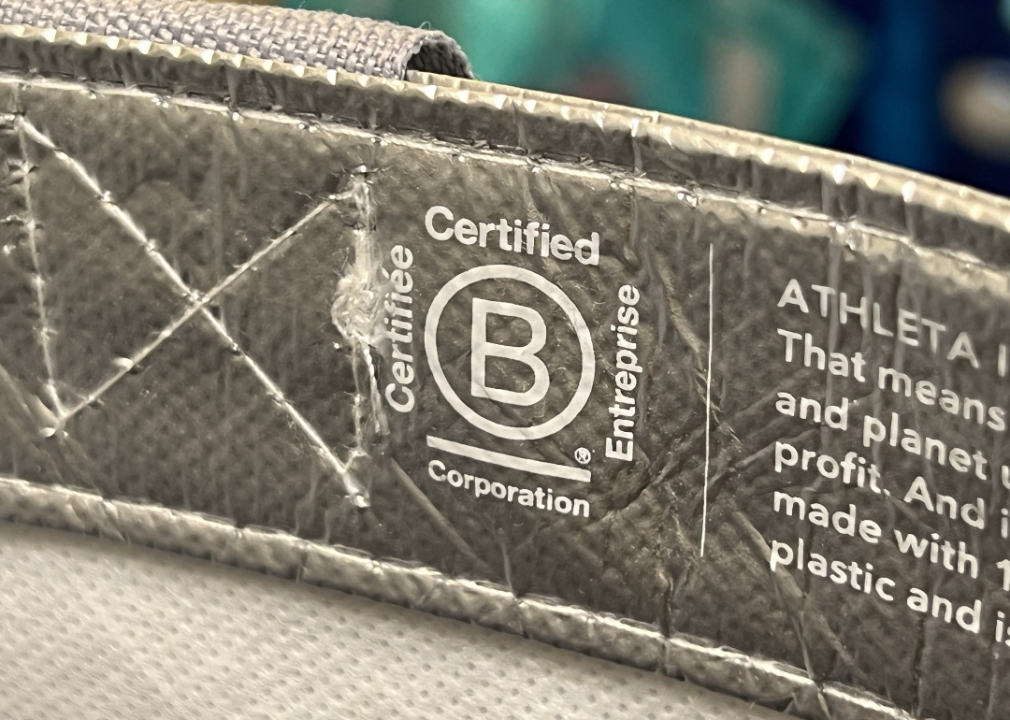
Smith Collection/Gado // Getty Images
Are there certifications to indicate an item is sustainably made?
A B Corp label.
A variety of third-party verifications help validate sustainability, but no single, simple certification exists. Though environmentalists have been thinking about sustainability for a long time, it’s a relatively new concept for many industries. As the demand for sustainable products and services increases and the climate crisis accelerates, industries are evolving to meet consumer needs.
Earlier this year, Sustainability Magazine listed 10 sustainability certifications, which include common ones like Energy Star, Green Seal, and Leadership in Energy and Environmental Design. The Good Trade, a sustainability and self-care newsletter, also compiled eight well-known certifications, including Certified B Corporation, which covers many industries. However, these lists are not exhaustive and illustrate the vast differences in sustainability standards and expectations across sectors.
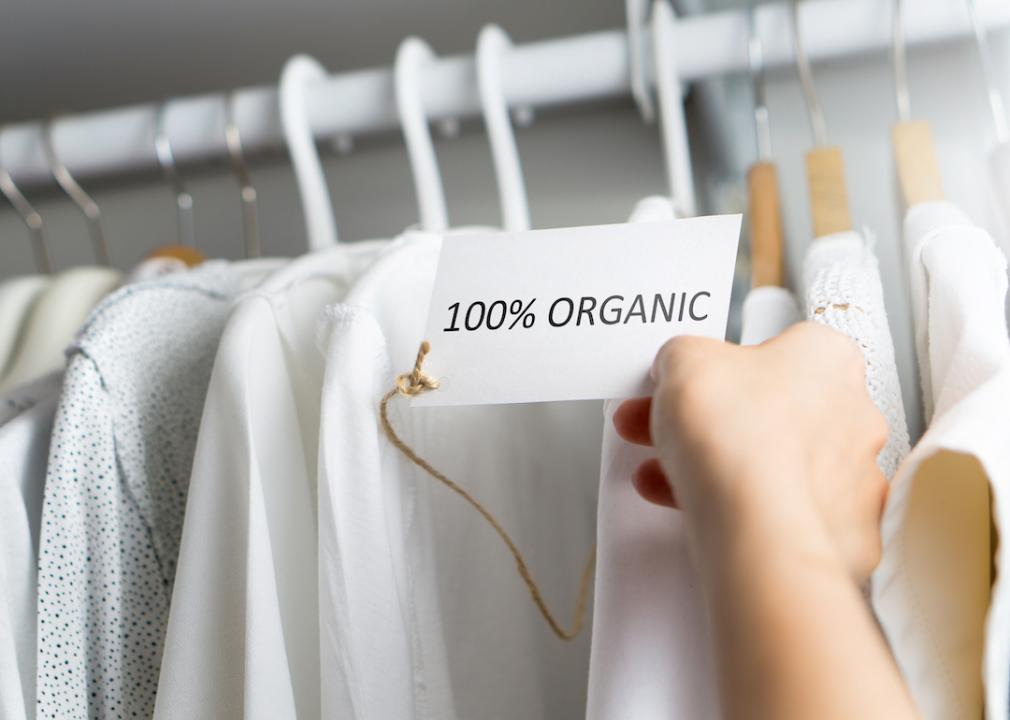
Tero Vesalainen // Shutterstock
How does durability fit into a conversation about sustainable shopping?
A person looks at a 100% organic tag on a clothing rack of shirts.
Durability, or an item’s ability to withstand wear and tear without losing quality and value, is central to sustainability. Some experts even posit there should be durability standards, especially for textiles and clothing. The “Buy Less, But Better” and “Buy Less, Buy Luxury” mantras have come into vogue partly because higher-end products are often more durable.
However, just because a product lasts forever doesn’t mean it’s sustainable—think plastic. It’s important that sustainable products be durable, but durability alone doesn’t make them sustainable. When shopping, consider the environmental and human impact of the product’s full life cycle and determine whether buying second-hand or spending more for a longer-lasting product are better options.
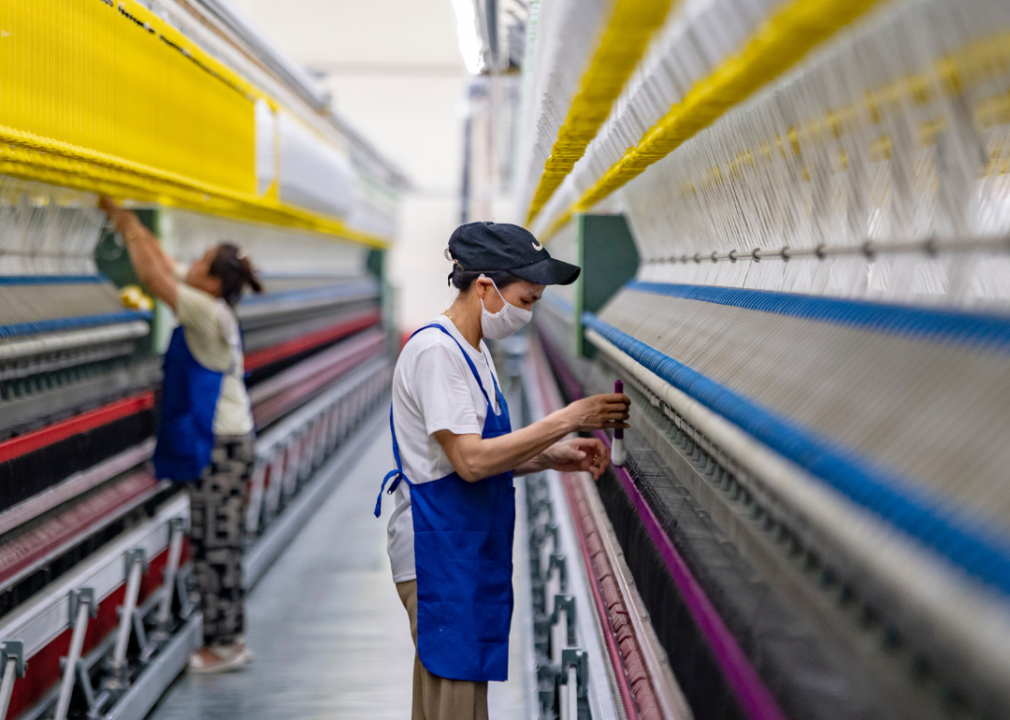
Zhao Chunliang/VCG // Getty Images
What materials should shoppers avoid?
A couple of people working in a polyester fabric factory.
Plastic, especially single-use plastic.
As far as fabrics go, avoid synthetic materials, which rely on petrochemicals and fossil fuels, and conventionally grown cotton, which uses high levels of pesticides. Instead, opt for organic cotton and other organic, natural fibers. For construction and building materials, cement, steel, and glass have large carbon footprints, whereas wood, clay, and hemp are better renewable alternatives.
Ultimately, the best way to shop sustainably and help the environment is to do your research on how the product is made and whether the materials are sourced as responsibly as possible. Avoid buying anything you don’t need, which often requires finding new ways to use a product or extend its use.
Story editing by Alizah Salario. Additional editing by Elisa Huang. Copy editing by Kristen Wegrzyn. Photo selection by Lacy Kerrick.
This story originally appeared on Made Trade and was produced and
distributed in partnership with Stacker Studio.